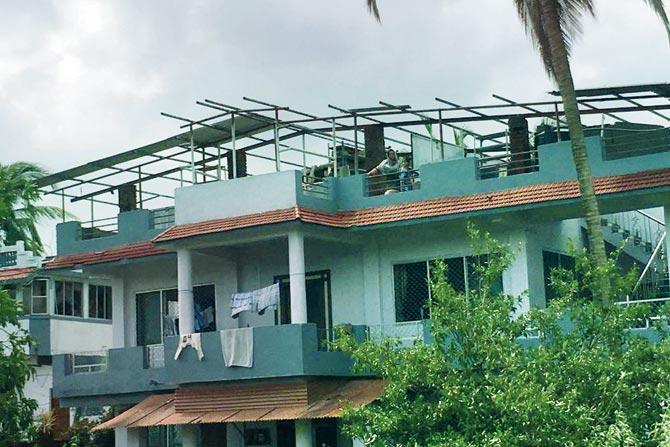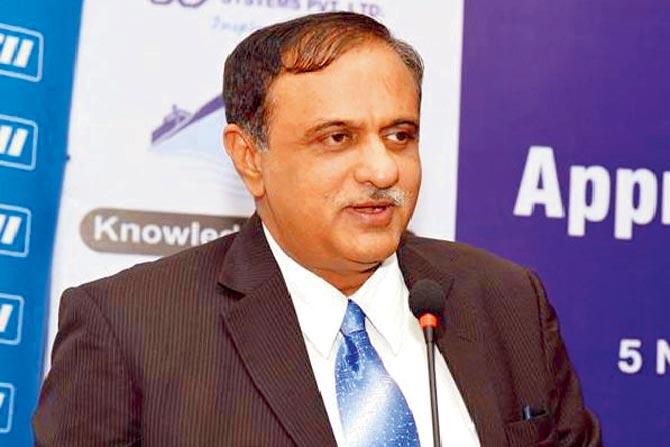The local admin wants to use terracotta roofs instead of tin sheets that were blown away in the storm, but has been given an aid of just Rs 5,000 per structure

The June 3 cyclonic storm blew away the tin roofs, while some terracotta ones were destroyed when trees fell on them
In the aftermath of Cyclone Nisarga, the biggest challenge faced by the local administration is rebuilding the roofs with limited financial aid. The traditional terracotta roofs of government buildings had been replaced with tin sheets, which were blown away by the cyclonic storm on May 3.
Now, the administration wants the terracotta roof back but they have a tight budget to work on. The government has announced R5,000 for each damaged house/structure and R1 lakh for buildings that have collapsed, under the Disaster Management Act. The officials say the compensation is way to less for the extent of damage thousands of houses and establishments have sustained.
ADVERTISEMENT
"We used tin sheet for the roof as it is very light and also much cheaper than terracotta roof. We will continue using tin roof as we suffered a massive loss of over R1 crore with damage to both our school and college buildings," Dilip Shet, Mangaon Taluka Education Society chairman, said.
Shet added that the Konkan coastline had never experienced a cyclone like this in the past 110 years so they never faced any trouble with tin roofs before. "Now, if we think of converting the existing structure to traditional terracotta, it will not only be costly, but the entire roof will have to be replaced. The tin sheets need a fabrication support at a distance of 10 feet, while terracotta roof needs support at every one and a half feet. Also, maintaining terracotta roof is much more challenging."

Raigad District Collector Nidhi Choudhari confirmed that houses and buildings with tin roof sustained major damages. "The tin sheets and asbestos shed for monsoon at some places were completely blown away when the storm hit. The terracotta roof of some of the administrative offices were damaged when tree branches broke and fell on them."
According to experts any lightweight flat roof is blown away easily in gusty winds. Hip roofs [all sides sloping downwards] are better than gable roofs [two sections sloping downwards], and world over, hip roof is recommended as they are cyclone resistant, they added.
A senior official, on condition of anonymity, said that the government architects should take into consideration the possibility of cyclones while redesigning the buildings housing government offices. "Even villagers should try to opt for terracotta roof, as tin sheets not only get blown away, but are also potentially dangerous as it may cause grievous injuries if there are people around."
Need to protect mangroves
The local administration also pointed to the benefit of large scale of mangroves and coconut trees along the coastline, as they worked as frontline saviours in curtailing the speed of the wind.
Dr Jiyalal Jaiswar, former chief scientist Council of Scientific and Industrial Research-National Institute of Oceanography, said, "It is a known fact that mangroves have been the first protective layer to prevent any cyclonic events because they play a major role in breaking the strong gusty wind. This was evident in Raigad district, where the untouched mangrove lines around the coastal area acted as a protective layer."

Dr Jiyalal Jaiswar, a scientist
"On the contrary, Mumbai could have witnessed a worst disaster, as the mangroves around the city-s coastline have been systematically destroyed over time. This is becoming a serious concern, when we experience such strong and deadlier cyclone," Dr Jaiswar said.
"The government should take a firm action to protect the coastal areas in and around Mumbai and up take afforestation work in the intertidal zones. Also, reclamation along city coast should be stopped to preserve the natural conditions of the shore. The government and NGOs should carry out plantation drive [of coconut trees] around the coastal line," Dr Jaiswar added.
"With global warming looming, it is high time that violations of the Coastal Regulation Zone CRZ norms is kept in check, as similar cyclonic storms and heavy rain will be a common phenomenon along the west coast of India in the years to come. The number of instances of cyclonic pressure in Arabian Sea has only increased in the past couple of years. Carbon dioxide plays a major role in climate change, as it results in temperature rise directly or indirectly linked with cyclone formation. We must now understand that destruction of nature in any form will only harm the human being in the long run," Dr Jaiswar said.
Precautions while designing buildings in cyclone zones
Deepak Mehta, a Mumbai-based architect, suggested a few measures that need to be taken while rebuilding the affected structures in Raigad district
- Structure to be designed by professionals, like architects, engineers, structural designers
- Wind direction, velocity and force, and load factors to be taken into consideration
- Building should have simple, regular shape to avoid concentration of pressure
- Build sloping roof to an angle of 30 to 45 degree, with minimum overhanging
- Increase stiffness, reinforce the structure with bracing to increase strength
- Roof covering should be properly fixed with roof structure
- Check wind directions and plant bearer trees to cut off heavy pressure of wind
-We need smart villages-

Dr P Sekar, founder-chairman of Micro Tech Global Foundation
Dr P Sekar, founder-chairman of Micro Tech Global Foundation and a veteran in smart city concept, told mid-day that there is a need for smart villages to deal with such situations.
"Smart Villages are communities in rural areas that use innovative solutions to improve their resilience, building on local strengths and opportunities. They rely on a participatory approach to develop and implement their strategy to improve their economic, social and/or environmental conditions, in particular by mobilising solutions offered by digital technologies. Smart Villages benefit from cooperation and alliances with other communities and actors in rural and urban areas. The initiation and the implementation of Smart Village strategies may build on existing initiatives and can be funded by a variety of public and private sources."
"A Smart Village enables its inhabitants to make use of the contemporary technological and social achievements, while its affordable infrastructures are still being developed in line with Sustainable Development Goals, offers an opportunity to efficiently deal with future of initiatives, constantly draws the parallels with Smart Cities, towns and national developmental policies."
"The secured village links three market elements of agriculture production, processing and marketing to boost the competitiveness of rural economies and communities. The rural elements make up the value chain of the rural economy with coordination, integration and marketing being the core functions of the smart villages. Besides, it will promote primary sector related service of skill upgradation training programmes food processing practices to reduce post-harvest losses and marketing. As a development guideline this concept would facilitate multiple returns on investment through value and valuation of infrastructure and structured planning. The measurable outcomes of the strategy can be used to evaluate the economic well-being of the rural community," he added.
Help Raigad
District Disaster Response Fund
Account No. – 38222872300
State Bank of India
IFSC Code -- SBIN0000308
Catch up on all the latest Mumbai news, crime news, current affairs, and a complete guide from food to things to do and events across Mumbai. Also download the new mid-day Android and iOS apps to get latest updates.
Mid-Day is now on Telegram. Click here to join our channel @middayinfomedialtd and stay updated with the latest news
 Subscribe today by clicking the link and stay updated with the latest news!" Click here!
Subscribe today by clicking the link and stay updated with the latest news!" Click here!







